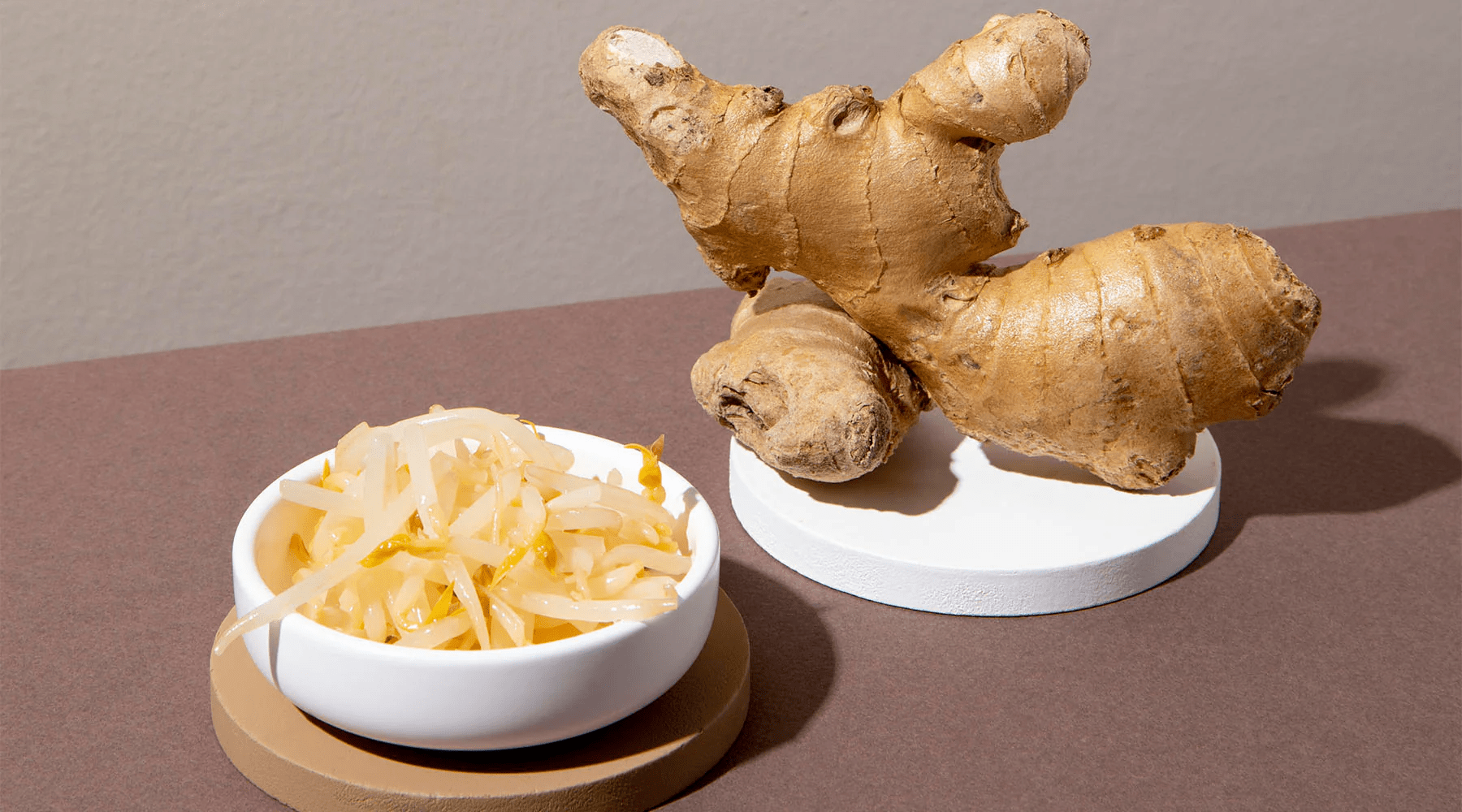
Ginger: Your Skin’s Secret Weapon Against Aging
What if a common kitchen spice could outshine expensive treatments for smoother, brighter skin? Imagine opening your pantry and finding a natural gem that’s been quietly waiting to help you tackle wrinkles, freckles, and dark spots. Ginger, that zesty root you’ve probably grated into stir-fries or tea, is stealing the spotlight as a skin-loving powerhouse. Ready to discover why this humble ingredient is making waves?

Aging skin can feel like an uphill battle. Wrinkles creep in, deepened by years of sun exposure, stress, and natural changes in your skin’s elasticity. Freckles and dark spots, often called age spots, can pop up seemingly overnight, leaving you frustrated with an uneven complexion. For many, especially those over 50, these changes aren’t just cosmetic—they can chip away at confidence. You might find yourself avoiding mirrors or spending a fortune on creams that promise miracles but deliver little. The worst part? These skin concerns often feel inevitable, like an unwelcome badge of aging.
But it’s not just about looks. Skin health reflects what’s happening inside your body. Poor diet, dehydration, or even chronic stress can make wrinkles and spots more pronounced. If you’re over 40, you’re likely noticing these changes more than ever—sun damage from decades ago can resurface, and your skin’s ability to repair itself slows down. It’s a problem that affects millions, yet the solutions, like invasive treatments or chemical-heavy products, can feel out of reach or risky for sensitive skin.
Here’s the suspense: what if you could address these skin concerns with something as simple as a spice you already own? In just three key steps, you’ll learn how ginger might transform your skincare routine. But there’s a catch—there’s one crucial mistake you need to avoid when using ginger, and we’ll reveal it at the end. First, let’s explore why this root is creating such a buzz.

Ginger isn’t just for flavoring your favorite dishes; it’s packed with compounds that may support healthier skin. Gingerol, the active ingredient in ginger, is a potent antioxidant, meaning it helps fight free radicals—unstable molecules that damage skin cells and speed up aging. Some studies suggest gingerol can reduce inflammation, which often contributes to dull, tired-looking skin. Imagine your skin as a canvas: when inflammation is high, it’s like painting over a bumpy surface. Ginger might help smooth that canvas.
Here’s your first mini-hook: did you know ginger has been used for centuries in traditional remedies for glowing skin? In ancient practices, healers mashed ginger into pastes to soothe irritation and even out skin tone. Modern research is catching up, with studies indicating that ginger’s antioxidants may protect against collagen breakdown, the protein that keeps your skin firm and plump. But how do you actually use it? Hang tight—we’re getting there.
The countdown continues: two more steps to unlock ginger’s potential. Ginger may also improve blood circulation, which is key for delivering nutrients to your skin. Better circulation means a brighter, more vibrant complexion—something you might notice after just a few weeks of consistent use. One study found that ginger extracts applied topically could reduce the appearance of hyperpigmentation, those stubborn dark spots that seem impossible to fade. Hyperpigmentation happens when melanin, the pigment in your skin, builds up unevenly, often due to sun exposure or aging. Ginger’s natural compounds might help balance this out over time.
Now, for the second mini-hook: ginger isn’t just for your face. Ever noticed rough patches on your hands or neck? These areas often show aging faster than your face because they’re exposed to the elements. A simple ginger-infused trick could help soften those spots, and it takes less than five minutes a day. Curious? Let’s dive into the practical steps to make ginger your skin’s new best friend.

Here’s the solution: three safe, easy ways to incorporate ginger into your routine. First, try a ginger tea rinse. Steep a tablespoon of grated fresh ginger in hot water for 10 minutes, let it cool, and use it as a gentle face rinse after cleansing. This can help soothe redness and give your skin a refreshed glow. Always consult a healthcare professional before trying new remedies, especially if you have sensitive skin or allergies. Second, mix a teaspoon of grated ginger with honey to create a hydrating mask. Apply it for 10 minutes, then rinse off with lukewarm water. This combo may help moisturize and calm irritated skin. Finally, add ginger to your diet—think smoothies or soups. Eating ginger regularly might support your body’s fight against oxidative stress, which can show up as fewer fine lines over time.
But here’s the critical mistake to avoid, the one we promised to reveal: never apply raw ginger directly to your skin without diluting it. Ginger is potent, and undiluted, it can cause irritation or even burns, especially for sensitive skin types. Always mix it with a carrier like honey or water, and do a patch test first. This simple precaution ensures you get the benefits without the risks.
Using ginger is about small, consistent steps. You don’t need a fancy spa or expensive products—just a little know-how and a willingness to try something new. Start with one of these methods this week, like the tea rinse, and see how your skin responds. It’s not about overnight miracles; it’s about giving your skin a natural boost over time. Plus, ginger is affordable and accessible, making it a practical choice for anyone looking to care for their skin without breaking the bank.
Why does ginger stand out? It’s not just about its antioxidant power. Unlike harsh chemical treatments, ginger is gentle for most people when used correctly. It’s also versatile—you can sip it, spread it, or rinse with it. Some research even suggests that ginger’s anti-inflammatory properties could help with puffiness, giving your face a more rested look. Puffiness happens when fluid builds up under your skin, often due to stress or lack of sleep. By calming inflammation, ginger might help your skin look smoother and more even-toned.

But don’t take our word for it—try it yourself. Pick one method, like adding a slice of ginger to your morning smoothie, and stick with it for a week. Notice how your skin feels. Does it look brighter? Feel softer? Small changes can add up, and ginger’s simplicity makes it easy to weave into your routine. Just remember to check with a healthcare professional to ensure it’s right for you, especially if you’re on medications or have skin conditions like eczema.
The beauty of ginger lies in its accessibility. You don’t need to be a skincare expert to use it, and you don’t need to spend hours prepping. Whether you’re 50, 60, or beyond, this spice offers a natural, low-risk way to support your skin’s health. It’s not about chasing perfection—it’s about feeling good in the skin you’re in. And who knows? You might find yourself reaching for that ginger root more often than you expected.
So, what’s your next step? Try the ginger tea rinse this week—it’s quick, costs pennies, and might just give your skin that subtle glow you’ve been missing. Share your experience in the comments on our website—we’d love to hear how it worked for you!
This article is informational only and does not replace professional medical advice — recommend readers consult a qualified healthcare provider for personalized guidance.
News in the same category


Over 60?: Eat THIS Seed to Protect Your Eyes & Retina Naturally

At 65, I Lost My Vision, But This Drink Brought BETTER VISION Back! I Drink It Once A Day!

12 Reasons Every Woman Should Drink This Powerful Tea Every Day: A 5-Ingredient Combo to Boost Your Health and Vitality

Carrot and Banana Juice Recipe | Healthy and Delicious Juice

Lemon and Cloves: The Secret Combination You Wish You Knew Sooner

Onion Juice for Hair Growth: The Shocking Secret to Stop Hair Loss Fast!

Wipe Away Age Spots in 20 Minutes with a Potato 💥 (Super Easy) 🤯

This Yeast Mask Makes Wrinkles Disappear Instantly – Try It and You’ll Be Amazed!

Seniors: 1 Cup of Turmeric Milk Before Bed Can Work Wonders 🌙✨

9 Diseases Cured with Guava Leaf Tea (How to Make It)

If You Have Eaten Raw Onions, Even One ONION Can Start an IRREVERSIBLE Reaction in Your Body! (For Prostate Health)

Garlic, 🍋 Lemon Juice, 🫚 Grated Ginger, and 🍯 Honey: Just One Teaspoon a Day and Prepare to Be Amazed!

Banana Peel and Cornstarch Will Make You Look Like a 16-Year-Old Girl | Banana Peel & Cornstarch Face Mask

This Vaseline & Aloe Vera Transformed My Skin in Just Days! 🌿✨

Garlic Oil for Hair Growth – Thin to Thick Hair | Long Hair | Increase Hair Density & Hair Volume

Old Doctors: We Mixed Castor Oil and Rosemary to Treat 23 Health Issues!

Zap Blackheads for Good: The Egg and Avocado Mask That’ll Transform Your Skin

Sip Love in Every Drop: The Okra, Cloves, and Cinnamon Valentine’s Drink for Couples Only
News Post

Save Money with This Onion-Guava Hair Trick

Over 60?: Eat THIS Seed to Protect Your Eyes & Retina Naturally

At 65, I Lost My Vision, But This Drink Brought BETTER VISION Back! I Drink It Once A Day!

12 Reasons Every Woman Should Drink This Powerful Tea Every Day: A 5-Ingredient Combo to Boost Your Health and Vitality

How to Grow Thicker Eyebrows and Longer Eyelashes Naturally with Garlic and Vitamin E

Heart surgeon shares four daily habits to avoid for better health

Chilling messages Charlie Kirk’s alleged killer sent to friends following assassination

Canelo vs Crawford: Terence 'Bud' Crawford makes history with victory over Canelo Alvarez

‘Adolescence’ star, 15, makes history with Emmys win

New details emerge after decomposing body found in Tesla linked to singer D4vd

Carrot and Banana Juice Recipe | Healthy and Delicious Juice

Lemon and Cloves: The Secret Combination You Wish You Knew Sooner

Onion Juice for Hair Growth: The Shocking Secret to Stop Hair Loss Fast!

Wipe Away Age Spots in 20 Minutes with a Potato 💥 (Super Easy) 🤯

This Yeast Mask Makes Wrinkles Disappear Instantly – Try It and You’ll Be Amazed!

Seniors: 1 Cup of Turmeric Milk Before Bed Can Work Wonders 🌙✨

9 Diseases Cured with Guava Leaf Tea (How to Make It)

If You Have Eaten Raw Onions, Even One ONION Can Start an IRREVERSIBLE Reaction in Your Body! (For Prostate Health)
